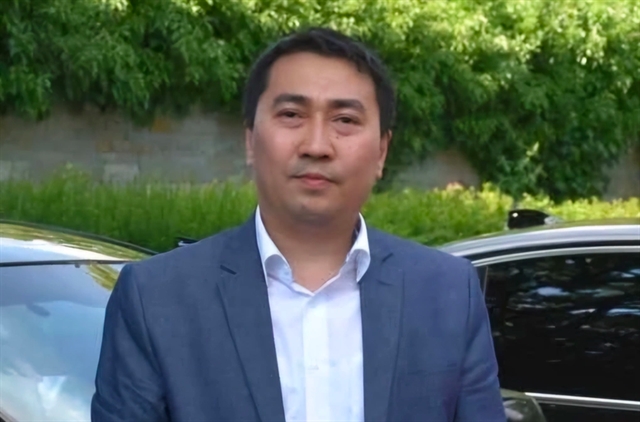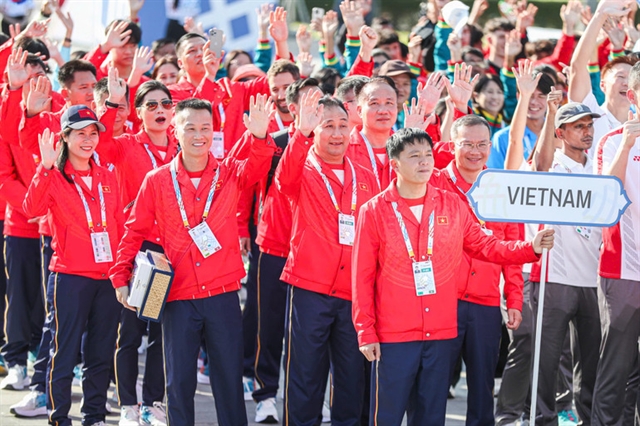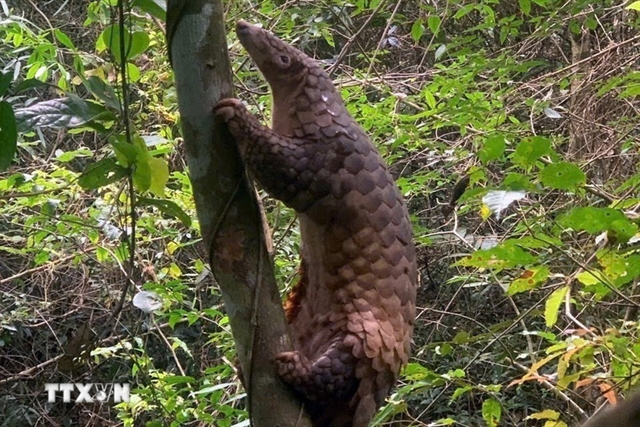 Environment
Environment
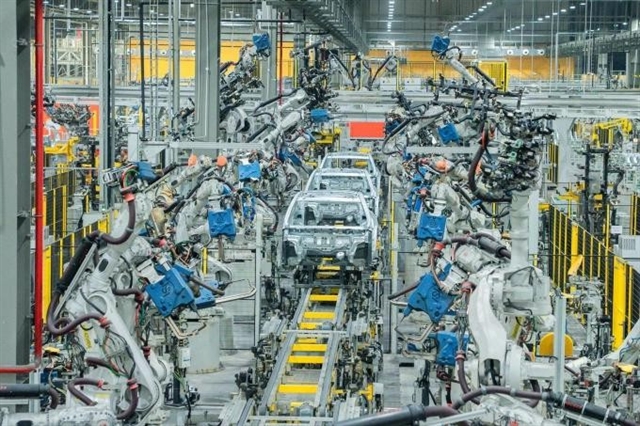
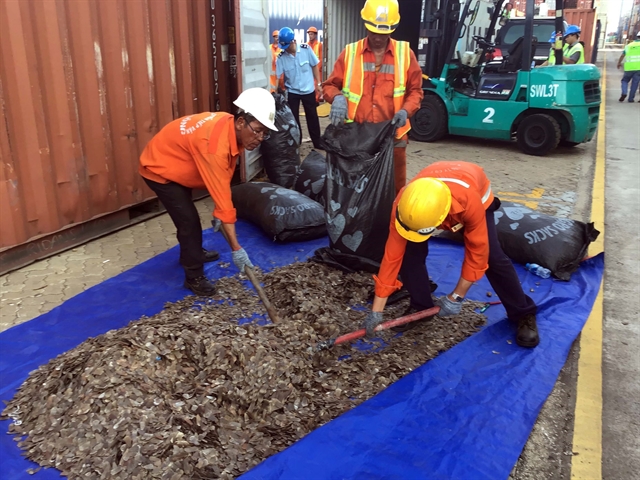
|
| More than five tonnes of pangolin scales were found in two containers at Cái Mép International Port in the southern province of Bà Rịa-Vũng Tàu in May last year. —VNA/VNS Photo |
HÀ NỘI — Despite strengthened law enforcement to protect wildlife, legal loopholes are hindering Việt Nam’s efforts, activists have said.
In 1994, Việt Nam joined the Convention on International Trade in Endangered Species of Wild Fauna and Flora (CITES) and Convention on Biodiversity (CBD), the country's first key international commitments to protect wildlife and conserve biodiversity.
The country has been developing its legal framework including the Law on Forest Protection and Development (passed in 1991 and 2004), Law on Forestry 2017 and Law on Biodiversity 2008. Notably, Việt Nam’s Penal Code 1999 had an article regulating crimes related to wildlife protection for endangered species. The Penal Code 2015, which was amended in 2017, had two articles regulating crimes on wildlife protection and endangered, precious and rare animals protection.
Those convicted of breaking Vietnamese laws protecting endangered species now face up to 15 years in prison and fines up to VNĐ2 billion for an individual violator and VNĐ15 billion (US$660,000) for a legal entity.
The previous Penal Code 1999 levied a maximum fine of VNĐ500 million for individuals and did not have criminal penalties against legal entities.
The Government has also issued a range of decrees and decisions over the issue.
The latest such move on March 6 saw Prime Minister Nguyễn Xuân Phúc ask Ministry of Agriculture and Rural Development and other ministries to promptly issue a directive on a wildlife trade and trafficking ban in response to the COVID-19 pandemic.
While questions about the exact origins of the coronavirus remain, the World Health Organisation (WHO) has confirmed it is a zoonotic disease, meaning it jumped from wildlife to humans.
The WHO has reported that the current COVID-19 pandemic, along with at least 61 per cent of all human pathogens, are zoonotic in origin.
The illegal wildlife trade is the second-largest direct threat to biodiversity globally, after habitat destruction. Populations of vertebrate species on earth declined by an average 60 per cent since 1970.
The Environmental Investigation Agency reported last year that wildlife trade and trafficking cases detected in Việt Nam or relating to the country in the last 15 years involved at least 105.72 tonnes of ivory (belonging to about 15,799 elephants), 1.69 tonnes of rhino horn (belonging to about 610 rhinos), skin and bones of at least 228 tigers, and the body and scales of 65,510 pangolins.
Education for Nature-Vietnam (ENV) last year recorded 1,777 violations relating to wildlife animals including 146 trafficking cases, 979 trading case and 610 cases on illegal wildlife farms.
Director of the Centre for People and Nature Reconciliation (PanNature) Trịnh Lê Nguyên said wildlife animal products such as bile, bones and eggs were not subject to the Penal Code 2015’s articles, which resulted in difficulties in charging wildlife traffickers with crimes.
According to the Penal Code’s Article 244, wildlife trader/traffickers commit crimes when the traded/trafficked parts of the animal are those the animal can not live without, for example, its head, heart, liver or lungs.
The vague regulation causes difficulties for law enforcement force to punish poachers who trade in scales, skin, hair, teeth, ivory, or horns, Nguyên said, adding that a pangolin could continue living if it lost a few scales but if it lost all of its scales it would die.
ENV Deputy Director Nguyễn Thị Phương Dung said wildlife animal products were evidence in wildlife trade and trafficking cases but Việt Nam’s law enforcement agencies faced a shortage of facilities to properly store them.
For example, without freezing equipment, wildlife meat, bones or horns would rot, resulting in possibly inaccurate judgments.
Dung said that Việt Nam still lacked clear regulations on which agencies can certify wildlife animal products and regulations on how wildlife should be taken care of and what exactly has been seized.
“Unclear legal regulations also lead to improper co-operation/overlapping among agencies - customs, border guards, forest rangers and environmental police in protecting wildlife,” she said.
While wildlife trade/trafficking and hunting criminals have formed international crime rings with increasing size and sophistication, international co-operation is still limited due to incompatible legal systems or the absence of mutual legal assistance agreements, she said.
She added one of her biggest concerns was improper understanding and awareness of people who consume wildlife products as food, medicine, decorations or jewellery.
“The consumption of wildlife products indirectly motivates criminals in hunting and trading wildlife as well as reduces the effectiveness of law enforcement tools,” Dung said.
Nguyên from PanNature said 14 non-profit organisations working for wildlife and nature conservation in Việt Nam have called on the Government to have stronger actions to control and crack down on wildlife violations. Particularly, the organisations recommended the Government close all illegal and unregulated markets and restaurants that sell wildlife.
To do so, Nguyên said, leaders of localities and agencies should take responsibility if wildlife trade/trafficking cases were detected in areas that they manage.
The policy that allowed some units to raise wildlife should be reconsidered and the operation of such units should be overseen and monitored strictly so no one could make use of the policy to legalise the supply for an illegal wildlife market. — VNS

